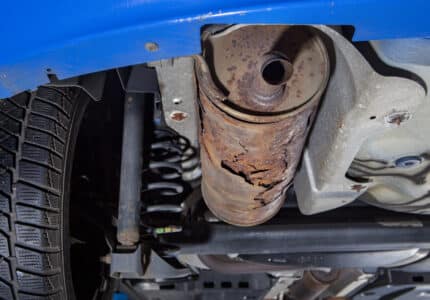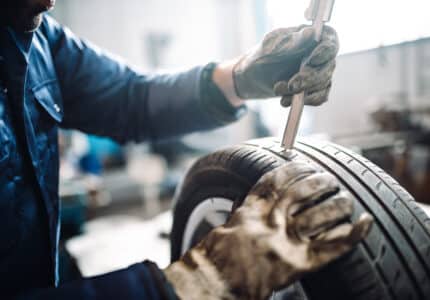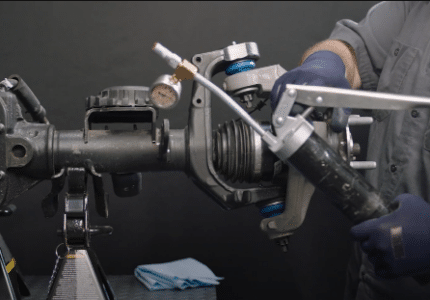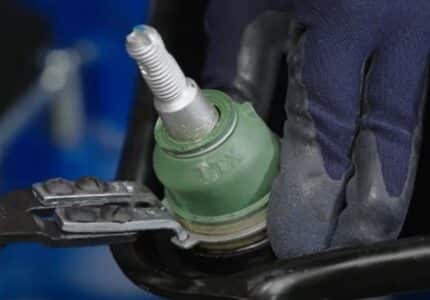Understanding the Differences Between Electric and Hydraulic Steering
The systems that assist your steering are constantly changing, from good old hydraulic to electro-hydraulic to electric and steer-by-wire systems – which will soon eliminate the mechanical connection between your steering wheel and your wheels on the road. Watch the on-demand webinar, where we discuss the different types of power steering systems, including advantages, disadvantages and some myths that are out there.
Types of Steering Systems
HYDRAULIC
A hydraulic pump sends pressurized fluid to a steering box or rack and pinion to assist you in turning the wheels. Typically driven by a belt, hydraulic pumps take their energy from a running engine.
Advantages:
- Common, well-known systems
- Good feedback from the road when driving
- Economical and easy to repair
- Reliable
Disadvantages:
- Reliant on engine power, so there is no power assist if the engine isn’t running
- Parasitic draw on the engine, the pump is always pulling power whether it is being used or not
- Fluid system, so it can be messy and susceptible to leaks
ELECTRO-HYDRAULIC
A hydraulic pump is powered by an electric motor that sends pressurized fluid to a rack and pinion to assist you when turning the wheels. It relies on sensor inputs from multiple points, including the steering angle, speed and engine RPMs. The pump motor works off the vehicle’s electrical system.
Advantages:
- Pump works off an electric motor, so no engine power draw
- Gives variable steering effort and feedback
- Available with engine off
- Fluid on demand, so systems are not overworking when not needed
Disadvantages:
- Expensive motor and control unit
- Still uses fluids and is susceptible to leaks
- Reliant on sensor inputs
- Complex repairs
- Space
- Weight
ELECTRIC
An electric motor controlled by sensor inputs drives a gear connected to either the rack, pinion or steering column to assist you when turning.
Electric Power Assisted Steering (EPAS) configurations:
C-EPAS: External motor assists in turning the steering column
P-EPAS: External motor drives pinion gear
R-EPAS: Internal or external motor drives a recirculating ball gear that meshes with a worm gear on the rack
In all of the above, there is still a direct mechanical connection between the steering wheel and the wheels, so if the systems go down you will still be able to steer in the old-fashioned hand-over-hand method. True steer-by-wire, where there is no mechanical connection, is not yet available.
Advantages of Electric steering:
- Lighter and space saving
- Variable steering effort
- No engine power draw, the motor only supplies power when needed
- Available with the engine off
- Increased fuel economy
- Keeps up with current vehicle tech, from autopilot to park assist, etc.
Disadvantages:
- Costly, complex repairs
- Need special repair equipment
- Reduced road feel and feedback
Busting the Friction Myths
Myths: When it comes to steering systems, we sometimes hear false statements about friction and the materials used in pivot points like ball joints and tie rods, such as:
- If you use anything other than polymer joints, the park assist will stop working.
- You’ll burn out the motor if you don’t use OE tie rod ends.
Facts: The friction presented by ball joints and tie rods is nothing compared to the torque output of a power steering system, which easily overcomes large amounts of friction from tires and road surfaces. The difference in friction between a polymer and a sintered bearing is minimal (1 ft-lb at the most) and both are in fact low friction.
Summary
Hydraulic systems are slowly being phased out and replaced by electric steering, which has many more advantages than hydraulic. Soon, steer-by-wire will replace mechanical systems as vehicle innovations continue, including advances in autonomous vehicles, the possibility of stow and go steering wheels, and so much more.
Finally, there is no need for friction concerns when replacing OE-style ball joints and tie-rod ends with tougher parts that include sintered bearings, not plastic. The friction differences between polymer and sintered metal is minimal and goes unnoticed by your steering system. Watch the webinar for bearing test results, steering system demos and more.




